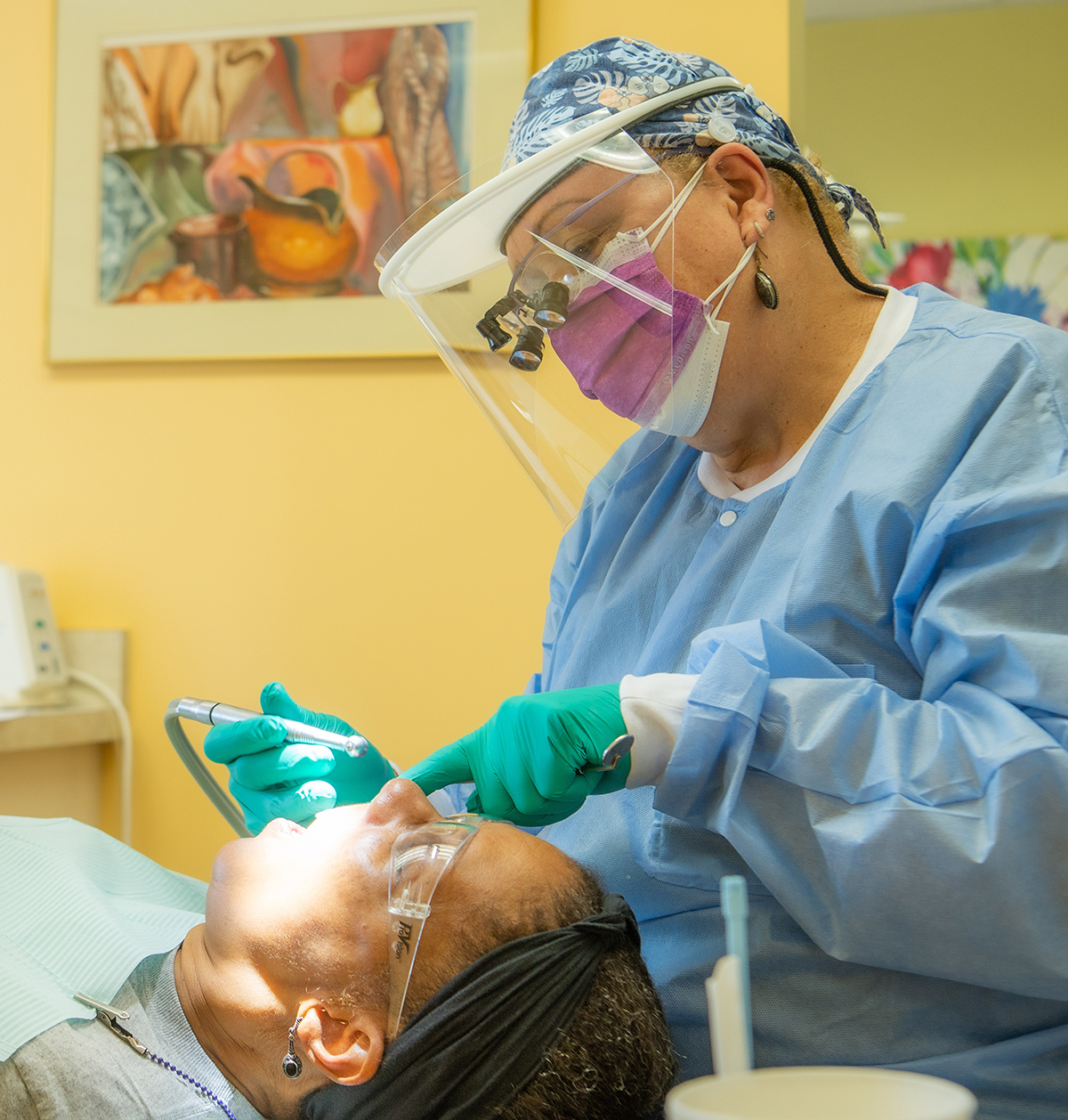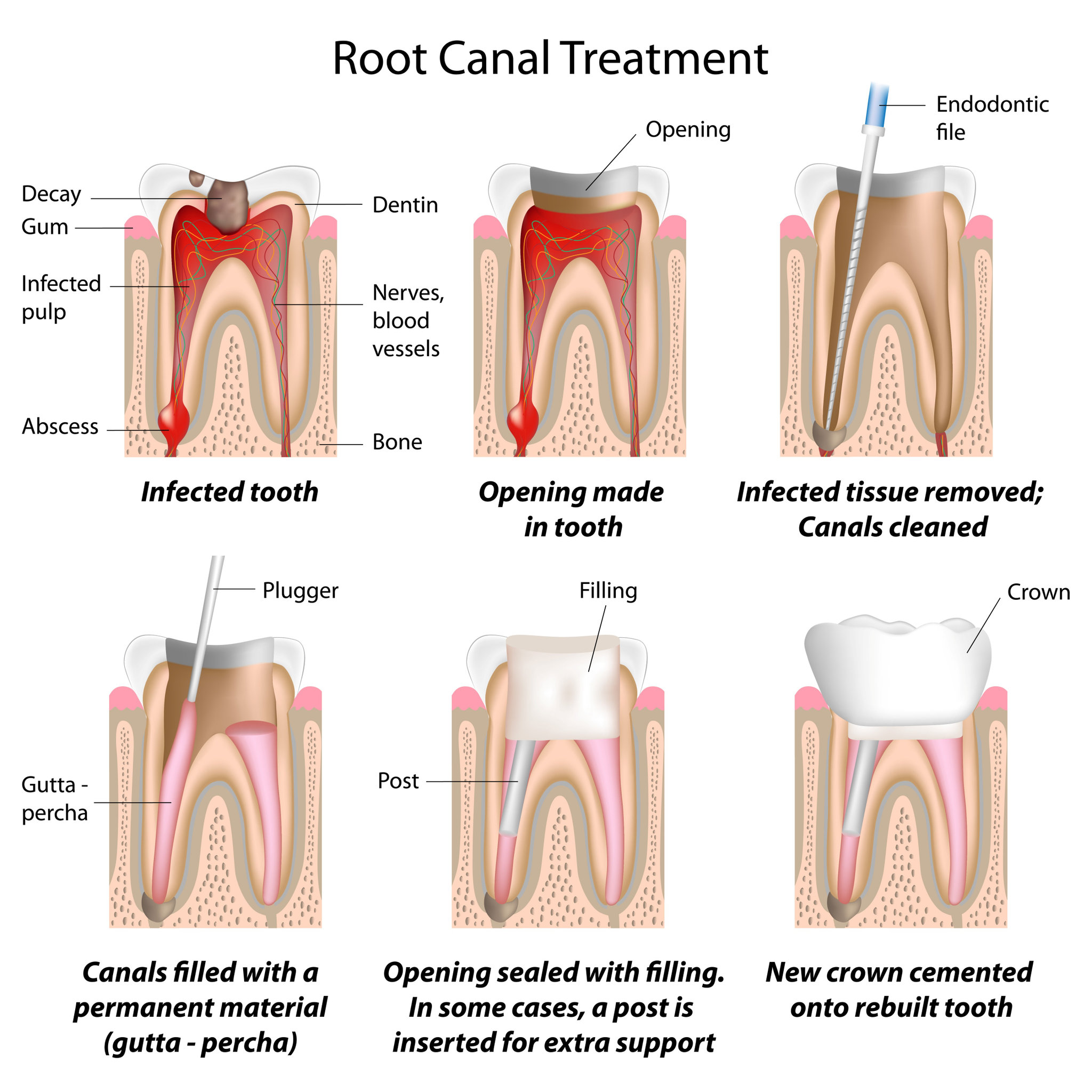Restorative Care:
Your Perfect Smile is Waiting for You!
Healthy Teeth = A Happier YOU!
If there’s one rule in Dentistry, it’s that unhandled problems DON’T just get better over time. It’s an unfortunate fact that they WILL get worse. Even if you’re not in pain, issues like unfilled cavities, cracked teeth and old amalgam fillngs are slowly spoiling your future oral health.
Wouldn’t you like to have that healthy smile you’ve always dreamed of? Free from cavities and other problems, and able to chew without pain — on BOTH sides of you mouth? Our expert Dentists provide gentle, pain-free Restorative dental treatments, using the latest equipment. A perfect smile is within your reach!
Restorative Services for Kids
When kids eat too much sugar or drink juice or mik right before bed, they can become cavity-prone or develop milk bottle caries. Cavities left untreated will become more serious, even leading to root canals, in some cases. That’s not something you want for your kids. Our expert Doctors perform basic Pediatric Restorative Care on children, and work together with our Hygienists to help prevent cavities and tartar buildup which can cause more serious problems down the road.
It’s Not Too Late! We Can Restore Your Healthy Smile.
OPEN HOURS
MON 8am – 5pm
TUE 9am – 6pm
WED 8am – 5pm
THUR 10am – 7pm
1st & 3rd FRI 9am – 2pm
2nd & 4th SAT 8am – 2pm
• • •
Same-day Emergency Appointments Available
Don’t Let Fear Keep You from Your Best Smile!
Receive Pain-Free Care from Our Gentle, Compassionate Doctors
Comfortable, Pain-Free Dental Treatment is Possible!
Restorative Dental procedures — such as fillings, crowns, and root canals — involve the use of dental drills, hand-held tools, and other dental devices that might cause some to feel nervous about undergoing treatment.
We understand.
Your comfort during treatment is always our top priority. Be sure to communicate your fears or concerns up front to the Doctor, so they can be addressed. And, if you’re feeling any pain during the procudeure, let your Doctor know immediately, so it can be handled.
Don’t let fear keep you from getting the dental treatment you need. Call us to discuss your concerns.

Dr. Christian took the time to explain what the x-rays revealed, what to look for in the future and really gave me enough information to feel confident that where she was filling my teeth were truly places that needed filling. Initially, I was quite apprehensive because it has been more than 20 years since I had a new cavity, and she reported that I had three. The news was overwhelming, but it was presented in such a way, that it was palatable. I am THE patient that dislikes the sound of the drill, water pick and anything to do with cleaning or fixing my teeth. Dr. Christian truly made me feel comfortable and was very sensitive to my emotional roller coaster.
Erica S.
Problems Solved — So You Can Smile Again
Unfilled cavities? Lost a crown? Chipped tooth? These and other dental problems can be solved. Using advanced technlogy such as oral scans and 3D x-rays, you can rest assured that your exact issues will be found, so they can be handled before they get worse. Regular dental visits allow Doctors to spot and diagnose problems before they become more serious, so don’t put off your next appointment!
Fillings: Improve Your Dental Health and Appearance
Root Canal Therapy — Save the Teeth You Have!

Root Canal Procedure
What is a Root Canal?
If You Have Tooth Pain, Cavities, or Broken Teeth Don’t Wait to Be Seen!
Crowns: Restore Your Natural Smile!
What are Crowns?
Fix your dental problem — AND Restore the look of your natural teeth! Crowns are synthetic caps, usually made of a material like porcelain, placed over the top of a whole tooth. Crowns are used to restore a tooth’s function and appearance following a restorative procedure such as a root canal. When decay in a tooth has become so advanced that large portions of the tooth must be removed, crowns are often used to restore the tooth.
Crowns are also used to attach bridges, cover implants, prevent a cracked tooth from becoming worse, or if an existing filling is in jeopardy of becoming loose or dislocated. Crowns also serve an aesthetic use and are applied when a discolored or stained tooth needs to be restored to its natural appearance.
How Are Crowns Made?
To make a custom-fitted crown, your tooth is prepared and an impression is taken and sent to the lab. A temporary crown is placed on the tooth to protect it until the permanent crown is ready. Permanent crowns are cemented in place using a special cement. Depending on the purpose, crowns can be all porcelain, porcelain fused to metal, or all metal. Permanent generally crowns last years, with normal eating.
Caring for Your Crowns
With proper care, a good-quality crown will last several years. It is very important to floss in the area of the crown to avoid excess plaque or collection of debris around the restoration. Certain behaviors such as jaw clenching or bruxism (teeth grinding) significantly shorten the life of a crown. Moreover, eating brittle foods, ice or hard candy can compromise the adhesion of the crown, or even damage the crown.
NOTE: Temporary crowns are not as strong as permanent crowns! They can crack and break much more easily, causing further problems. If you have old temporary crowns, come see us!
“Dr. Christian is the most patient, kind & understanding dentist. She has worked so hard to fix my mess created by others – Her work is impressive. We are almost finished so I can smile beautifully again very soon. The staff is Excellent too —especially Wendy & Judy. They are really on the ball & very nice. So to some up in 2 words: Honest & Excellent!!!”
— Mary N.
Are Missing Teeth Holding You Back?
There are a number of treatments to restore missing teeth, so you can chew confidently and stop suppressing your smile. Our Doctors will review your case thoroughly — meaning looking at you as a whole, including your lifestyle — and propose the best solution for you.
Implants: The Most Advanced Tooth Replacement
Implants are like metallic roots that are placed in the area of the tooth normally occupied by the root. They are so well designed that they mimic the look and feel of natural teeth! You can get just one implant, or a type of implant therapy which provides a full set of new teeth.
Implants are for both young and old patients!
Are Dental Implants right for you? Learn More.
Dentures: A Beautiful Smile is Yours Again
Dentures are a common way to remedy missing teeth and restore your smile, but they must be removed and cleaned daily. If you have teeth left, there are partial dentures. If you have no teeth we can make full dentures, which can also be secured by implants. At Village Dental Group we care about the health of your mouth and how it makes you feel. Getting dentures can help alleviate any insecurity about missing teeth or an imperfect smile.
Bridges: A Few Missing Teeth? No Problem
Bridges are natural-looking dental appliances that can replace a section of missing teeth. Because they are custom-made, bridges are barely noticeable and can restore the natural contour of teeth as well as the proper bite relationship between upper and lower teeth.
Bridges are sometimes referred to as fixed partial dentures because they are permanent, and are cemented to existing teeth or implants. There are several types of fixed dental bridges, including conventional fixed bridges, cantilever bridges, and resin-bonded bridges. Unlike a removable bridge, which you can take out and clean, only your dentist can remove a fixed bridge.
You Don’t Have to Endure the Problem of Missing Teeth!
Patients Rave About Their Experience
Dr. Simmonds and Dr. Christian are the brilliant Doctors that implanted my teeth and they did a outstanding job! Dr. Christian is a God-send, and I love the work she has done & brought my smile back to life! I have definitely recommended both of them to all my friends and family. I don’t know how to thank them for restoring my smile making this lady feel like a million dollars with my million dollar smile!
Sylvia H.
Dr. Christian is an excellent dentist, very personable, very funny. If I’m in pain during a procedure she’s quick to make me laugh, it takes the pain away — she’s got some serious stand-up skills. She’s very straightforward, she’s direct when it comes to your health needs and just making sure that I do the things I need to do to make sure I keep my teeth.
Willie W.
Click to See More Testimonials, Videos and Reviews
Don’t Wait — Go Get Your Healthy Smile!
Explore Our Other Services
Looking for a whiter smile? Swollen or bleeding gums? Are your teeth mis-aligned? You can have the smile you want, regardless of your dental needs. Learn how, by visiting our other Service pages.
Cosmetic Services
Gain confidence and love your beautiful smile!
Learn more…
Oral Health
Prevent problems and improve your overall health!
Learn more…
Orthodontics
Gorgeous, even smiles are our specialty!
Learn more…
Implants
Regain a full mouth of beautiful teeth!
Learn more…






